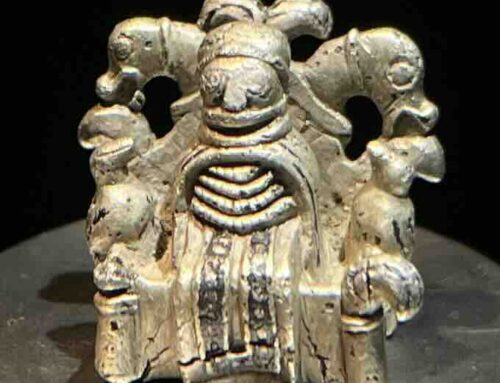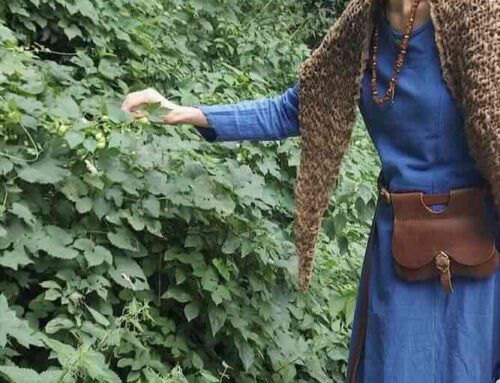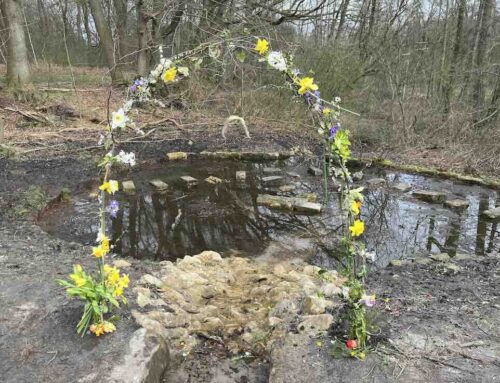Yesterday, Samhain, I joined a Pagan group in a Winternachten-Cunura-Walk.

Who was Cunera; a legend, saint or Goddess?
Just outside the center of Rhenen lies the Cunera hill, said to be the burial mound of a young woman named Cunera, raised for her by the Frisian king Redbad.
According to the 14th-century legend only one virgin survived the massacre when Saint Ursula and her eleven thousand virgins were martyred in Cologne, Germany by the Huns during the fourth century. Her name was Cunera — a princess from the Orkneys. The King of the Rhine abducted her under his cloak and took her to his palace in Rhenen. Here she became deeply loved by the people for her kindness and care for the poor. She earned the King’s support, who entrusted her with the key to his cellars. This aroused the jealousy of the King’s wife. While the King went out hunting, Cunera was strangled to death by the Queen, by means of a scarf. Cunera’s body was secretly buried in a stable. The crime was miraculously discovered thanks to the horses. The queen committed suicide by jumping off a cliff. Her chamberlain, who had assisted her in the murder, was beheaded. After her death, Cunera brought about many healings and rescues from drowning. (Source: Wikipedia). And here also more information on Cunera: http://resources.huygens.knaw.nl/vrouwenlexicon/lemmata/data/cunera/en
Heimo; king, giant or god?
The Heimenberg towers high above Rhenen. On top of the Heimenberg lies a mysterious ancient walburg. According to tradition, the equally mysterious Heimo lives or lived here.
October 28 is the day of Sinte Cunera. Around this time we always change the clock and go into winter time. We make the movement from the outside in. Both literally and figuratively in ourselves. The time of regeneration and stillness is dawning.
The Christians celebrate All Souls and All Saints, the Pagans celebrate Samhain or Halloween. And Pagans?
From our regions, the sacrificial feast in honor of Goddess Tanfana is known that took place at the end of October, roughly at the same time as the holy day of Sinte Cunera. In North Germanic sources this festival is called ‘Winternachten’ at the beginning of winter. For the pagan Anglo-Saxons, Beda calls the October full moon festival ‘Winterfilleth’. This year the full moon falls on October 31!
Yesterday we walked from the Cunara hill to the Heimenberg and back again. At different times during the day we reflected in a ritual setting, in an appropriate manner and shared mead and horse meats (as Cunera is the protectress of horses, among other things). In circle we greeted the dark season, fortified by deep connections to the land of our ancestors.

I received this beautiful message for the coming months; new beginnings even in dark times.

Fehu: Wealth and success will soon arrive. Long hours of hard work which took place in the past which will soon be rewarded. Wealth is always fluid and changing, but Fehu’s appearance usually signifies an upswing in business affairs and earnings.
Wishing you a healing Winter, much love and strength to you. Hail.
Love, Charissa x






